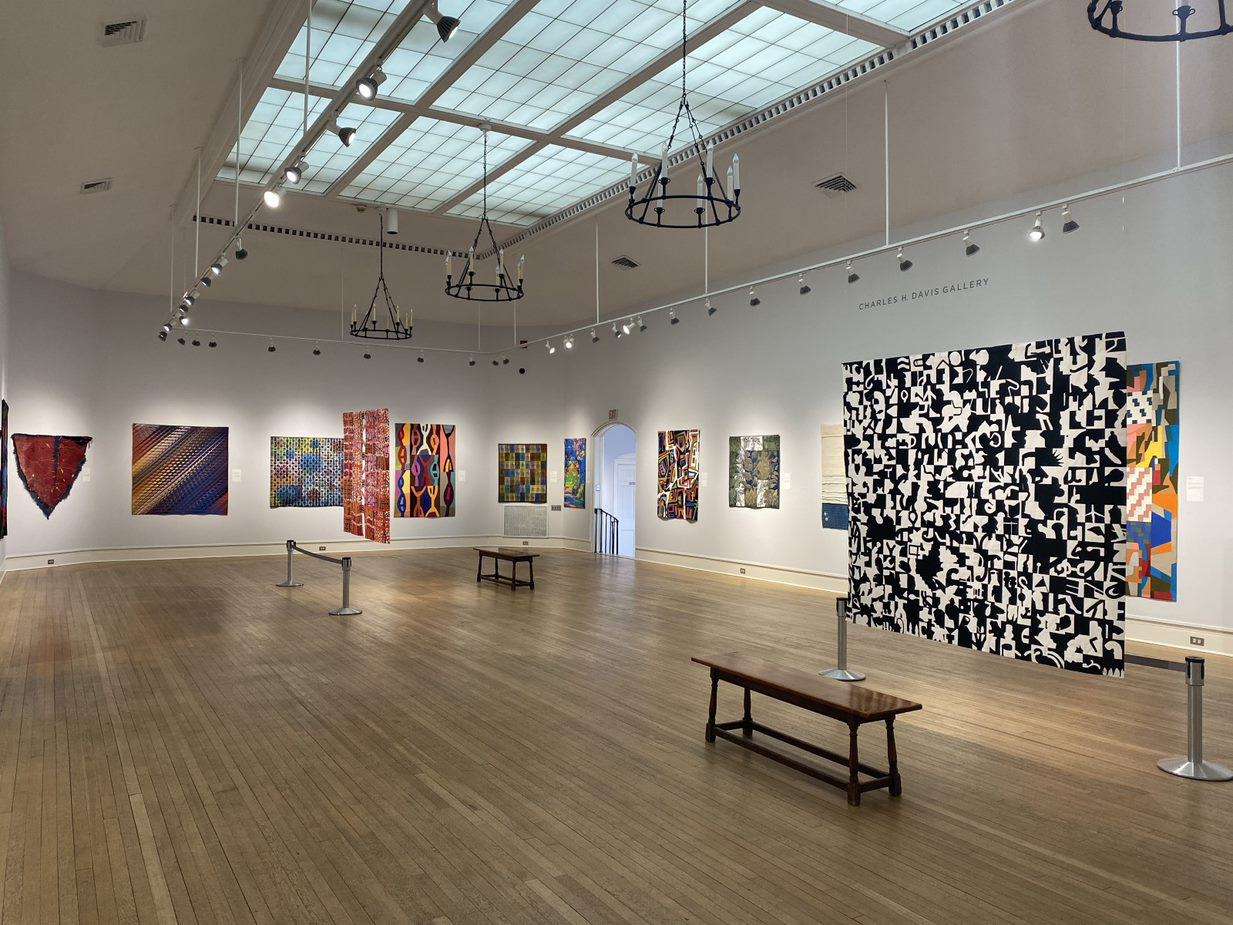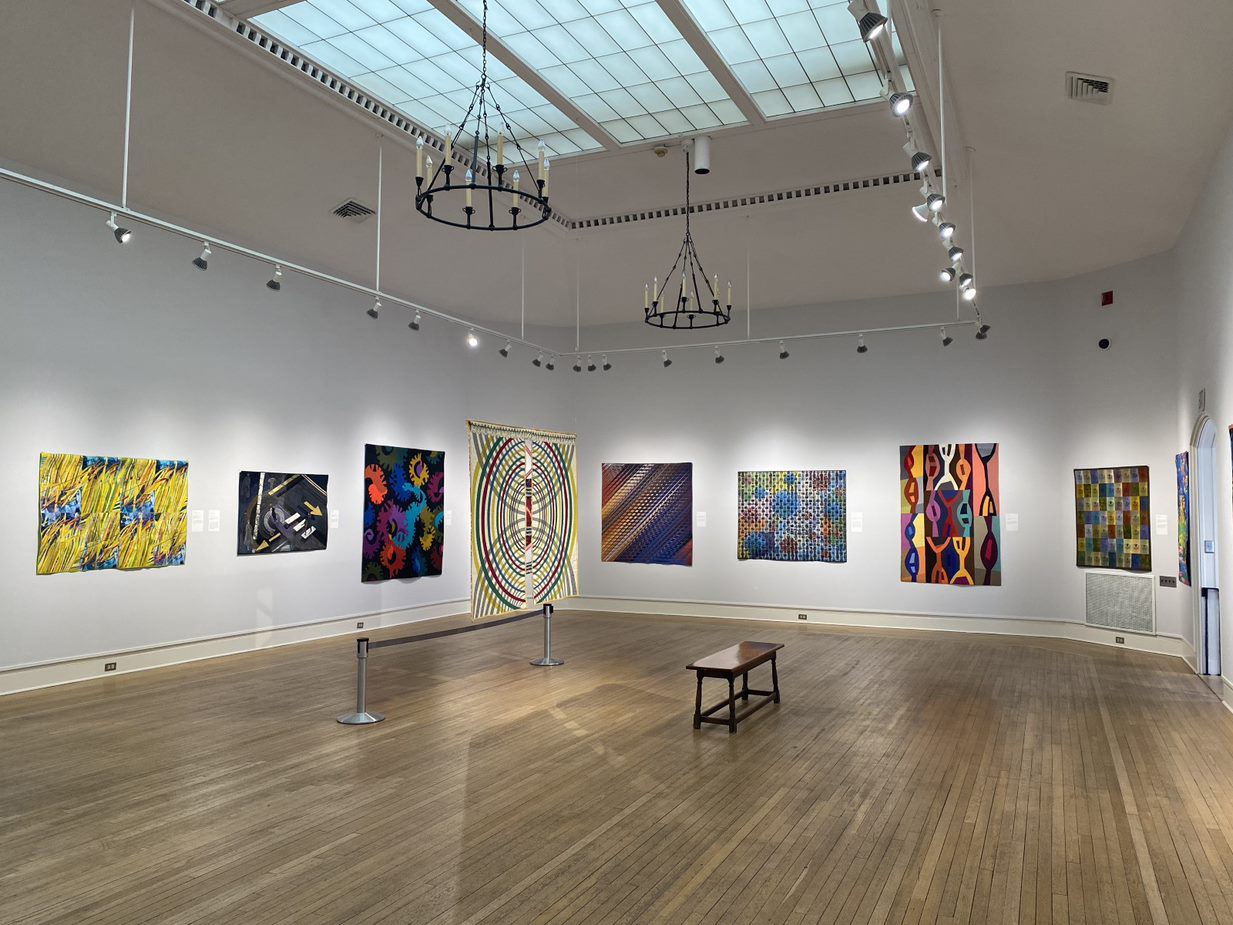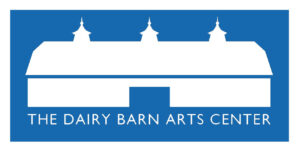
A year-long exploration of narrative art continues at Mystic Museum of Art (MMoA) with Quilt National ‘21, a special contemporary quilt exhibition produced and circulated by the Dairy Barn Arts Center in Athens, Ohio. This curated selection of 26 quilts features artists from five countries on three continents. Blending modern technology with traditional techniques, this international group of quiltmakers address contemporary topics such as the COVID-19 pandemic, social justice, and climate change.

“Before Quilt National, the word ‘quilt’ nearly always referred to a particular kind of bed cover—a fabric sandwich,” according to Hilary Morrow Fletcher, the project director of Quilt National between 1982 and 2006. Reduced to its most basic elements, a quilt consists of two layers of fabric with a layer of padding, called wadding, in between. These layers are held together by lines of stitches, which create a pattern or design. This technique evolved from a practical necessity: to create warmth and comfort for the wearer. Quilting also rapidly developed into a decorative artform, with the earliest surviving Western example—stitched in Sicily during the mid-14th century—depicting scenes from the legend of Tristan and Isolde.
Quiltmakers often drew inspiration from scripture, myths, and family histories to imbue their utilitarian quilts with beauty and meaning. Like their contemporaries on display in Quilt National ‘21, they also used their skills to tackle world events and social movements, from banners supporting causes like suffrage and temperance to charity quilts auctioned off to raise money for wounded soldiers.
The earliest quilts are known as whole cloth, or counterpane, made of single pieces of material, with the design being achieved solely through the stitching. Counterpanes evolved into appliqué, or “laid on,” quilts, where cut-out shapes in contrasting colors are stitched down onto the whole cloth. The Industrial Revolution created an influx of machine-made fabrics in a variety of patterns, leading to the colorful patchwork quilts most associated with the artform today. Patchwork quilts created during times of austerity, like the Great Depression or World War II, are also known as “utility quilts;” so called because the quiltmaker could recycle portions of old fabrics and garments into something new and functional.
Although quilts were often passed down through the generations of a family as treasured heirlooms, they were not considered to be a high artform due to the medium’s close association with craft and history of being a women’s art. Quilting’s popularity particularly waned during the 1950s and 1960s, with the technique being considered old-fashioned by a generation who had grown up during the War Years’ mentality of “making do.”

This opinion shifted during the 1970s, with the 1971 exhibition Abstract Design in American Quilts at the Whitney Museum in New York City, where vintage quilts were exhibited like modern art; the 1976 bicentennial, where colonial and heirloom quilts were displayed throughout the country, leading to a renewed interested in the artform; and in 1979, with the first Quilt National exhibition.
Quilt National endeavors to carry the definition of quilting far beyond its traditional parameters to promote quilt making as what it always has been—a prestigious and important artform. Many of the quilts on display in Quilt National ‘21 hold fast to the traditional quilting methods of piercing and patching, while simultaneously embracing technological innovations like the ability to print photographs on fabric (as seen in Cécile Trentini’s Another Year and Jill Kettula’s 6’ of Chaos) and unusual materials (such as the 35mm film incorporated into Arturo Alonzo Sandoval’s CONFINED CITY IN THE AGE OF COVID-19 No. 2: NYC).
Over the course of 22 biennial exhibitions, Quilt National has expanded from its inaugural, domestic showing of quiltmakers from 43 states to an international phenomenon of artists spanning six continents, demonstrating the international elevation and acceptance of this historic narrative artform. As observed by Brigitte Kopp, one of the three jurors for Quilt National ‘21, “The medium ‘quilt’ has found recognition in the world of fine arts. Contemporary art fairs and galleries have opened up to all styles and techniques over the last decade. Pure quilt exhibitions are also shown in museums that are not specialized in textiles.” MMoA is honored to be counted among that number.
—


This exhibition is produced and circulated by the Dairy Barn Arts Center, Athens, Ohio.
—
Learn more about Quilt National and The Dairy Barn Arts Center in Athens, Ohio
Full exhibition catalogs for Quilt National ’21 are available online